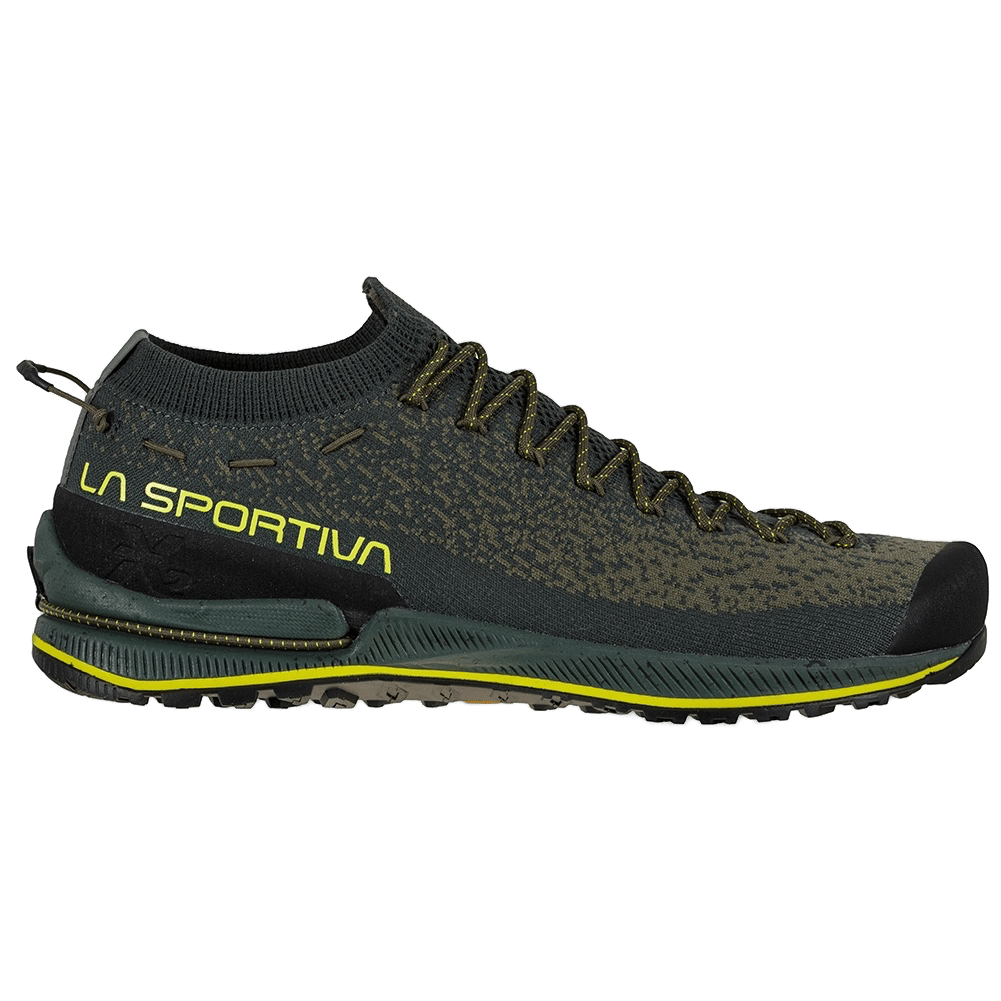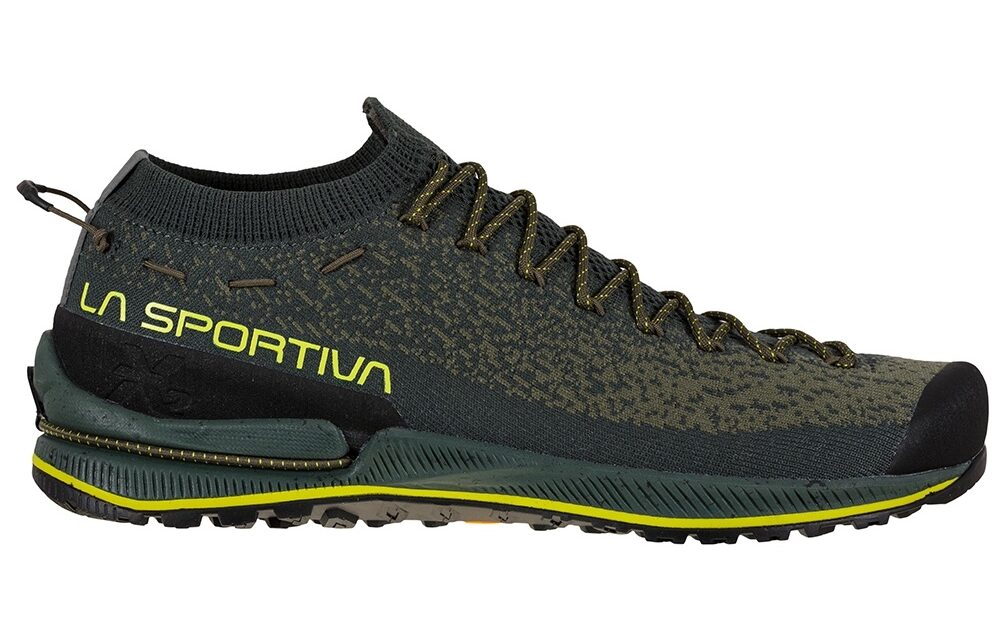Two years ago, a magazine sent me out to Las Vegas to write a profile of Alex Honnold, who was working on his idea of a big free-solo link-up across the Red Rock skyline. He estimated there’d be something like 8,000 meters of free soloing in his link-up, which boggles the mind. I spent the day watching Honnold and Cedar Wright, who joined him for a leg of this mission, free solo a few classics in the 5.8 range.
What was curious to me was that I noticed Honnold was wearing some La Sportiva approach shoes, without socks, as if they were climbing shoes. With 8,000 meters of climbing, he knew he needed to save his feet as much as possible, which meant free soloing “easier” routes in approach shoes, and only putting on his normal climbing shoes for the hard shit.
I like using ropes, thanks very much, and have no aspirations to become the next free soloist, but the idea of eschewing socks and having a bit of climbing-honed performance underfoot for the approaches and technical scrambles is something that interested me. And so it was with that in mind that I picked up a pair of the Sportiva TX2 Evo approach shoes, one of the more technical and lightweight approach shoes made by this Italian company.

Specs
Eco materials come from recycled raw materials including a recycled knit upper and laces, and an EVA midsole with 7% recycled content
Innovative and patented resole platform is designed for quick and easy resoling by replacing the tread and compressed EVA ESS platform
C2™ ComboCord: an elastic cord that allows you to pair and store shoes compactly in your backpack or attach them to your harness
$149.95
Where to Buy
Reviewing the Sportiva TX2 Evo
The Sportiva TX2 Evo has a low-profile tread, with sticky Vibram rubber, and they’re super stiff which makes it possible to really edge, as if you’re wearing a normal climbing shoe, on pretty technical and steep rock.
I sized down a half-size and have been wearing the shoes without socks on approaches and on easy climbs, as well as wide hand cracks / off widths in Indian Creek, routes with one size where you want a bulkier shoe anyway than a normal climbing shoe. So far, I’ve been impressed with how much technical climbing performance I am getting out of the Sportiva TX2 Evo.
What makes these shoes feel more like a climbing shoe than a normal approach shoes is that knit upper, which is a single piece of stretchy and comfy knit fabric that breathes well and hugs your foot. The shoe is so snug around my bare foot that I can technically wear the shoe unlaced and not feel like my foot will slip or slide around.
I’m fine going on short approaches sans socks, but to prevent blisters, I wear the thinnest sock possible on anything much longer than 20 minutes. Still, if the approach is that long, I’d probably prefer to wear an approach shoe that isn’t sized down for climbing performance—something with more room that will be comfortable as my feet swell over the course of a day.
Using the shoe in this way makes the Sportiva TX2 Evo a bit of a niche item: if you’re interested in an approach shoe that excels in technical climbing performance, I can’t think of a better option than the Sportiva TX2 Evo, especially if it’s sized snugly and worn without socks. It feels remarkably like a real climbing shoe and if you’re skilled, you can probably do quite a bit of moderate terrain in this shoe, which might be a selling point for guides, scramblers, ridge runners, and free soloists.
However, if you’re looking for a solid hiking shoe that can get you to the crags, unless you have really narrow feet, I’d maybe look to other offerings that aren’t nearly as technical as the Sportiva TX2 Evo and bring more hiking performance.
There are a few other small features worth calling out: a bungee band on the heel of each shoe allows the Sportiva TX2 Evo to be rubber-banded together, making a single low-profile unit that you can clip to the back of your harness.
Given how snug the knit upper is, I wish this shoe didn’t have laces and maybe had two or three low-profile Velcro straps, more like a climbing shoe? Especially if you’re doing any crack-climbing in these shoes, the laces are just going to get chundered pretty quickly—and honestly, they don’t really add much additional security.
The shoe has a really narrow fit and it is really stiff, so wide-feet havers should beware. They break in after a few days and become more comfortable, but still retain their edging stiffness that lends themselves to being as close to a real climbing shoe as an approach shoe is probably going to ever get.
This review contains affiliate links that support this site.




Recent Comments